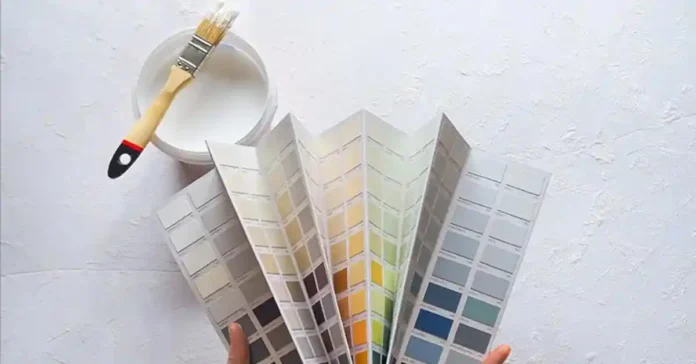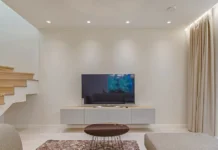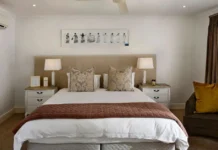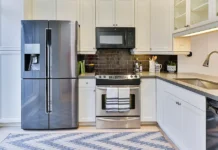Are you ready to give your home a fresh new look? Discover the latest trends in paint colors for room that can transform your space into a stylish and inviting haven. From calming neutrals to bold and vibrant shades, finding the perfect paint colors for your living room or any other room is important in creating the atmosphere you desire.
Incorporating trending paint colors not only provide the aesthetic appeal of your space but also contributes to renovation efforts. By choosing the right colors, you can create a sense of spaciousness, hide imperfections, and revitalize your home’s ambiance.
Additionally, consider how paint colors can complement storage facilities and organizational solutions. A well-coordinated color scheme can seamlessly integrate storage areas into your room design, making decluttering and storage management handy.
Explore our guide to trending paint colors for rooms and unlock the potential to transform your space into a functional environment that reflects your style and personality.
Paint Colors for Room
Explore the latest trends in paint colors for your living room and other rooms, designed to transform your space into a stylish retreat. From soothing neutrals like soft greys and warm beiges to bold hues such as deep blues and lush greens, there’s a color palette to suit every taste and style.
Choosing the right paint colors is important as lighter shades can create an illusion of space, while darker tones can add depth and drama. With the perfect paint colors, you can elevate your room’s ambiance, hide imperfections, and create a welcoming environment that reflects your personality and lifestyle.
Let’s understand how to choose the right color –
Think About Mood
The most crucial thing to keep in mind when choosing your colour scheme and styles is that it must express how you feel on the inside. Go bolder with vibrant hues like orange, yellow, pink, green, blue, purple, and even turquoise if you are feeling upbeat and energised. Try something softer and warmer, such as brown, grey, tan, and white, on the other hand, if you are feeling a little low. Neutral colours like milk, ivory, taupe, charcoal, and black might appeal to you, if you want to ring in the classic/ elegant look.
Choose the right colour for your space can be a daunting task, but it’s important to consider factors like lighting, mood, and personal taste.
Consider Balance
Keep in mind that you want to create a sense of equilibrium when choosing a colour palette. For instance, you would not want to add a lot of deeper hues like burgundy, maroon, or navy if you were painting your walls a light shade of grey. Similarly, if you intend to utilise bright colours like pale greens, blues, pinks, yellows, or oranges, avoid using dark tones like chocolate, mahogany, or ebony. You may prevent seeming disorganised and cluttered by maintaining a neutral tone across your space.
Keep Things Simple
If you are trying to choose a particular colour, you already know what you want. If you are having trouble choosing between several possibilities, though, take a step back and consider if you really need to commit to a specific hue. Concentrate on the overall concept behind the pick rather than the specific colour. For instance, you might start with a small sample swatch of a colour and see how it appears in your room in natural light if you love the look of a particular wall colour but are not ready to commit to it. You can reduce your options to two or three alternatives once you have identified colours that reflect your style.
Once you have decided along with your family or the people you are going to be sharing your space with, you will be ready to finalise the right colours. The next part of this article will help you look at things that get overlooked before you chose the right one!
The natural lighting in a room can greatly affect the appearance of color, so it’s important to consider the amount and direction of light when choose the right colour.
Steps to Finalize the Right Colour for your House
To create a pleasant environment, colour is crucial. We utilise colour to boost our self-esteem. The personality of a person affects the colour they choose. The poor colour choice for our home may truly have an emotional impact on us. What comes to mind, then, when you hear the word “colour”? Do you envision anything hospitable and sunny like red, orange, or yellow? Do you picture colours like grey, black, or blue that are cold and dark?
Asking yourself these questions is the greatest method to figure out the ideal colour palette for your home. How does your house reflect on you? What impression do you want to make on people? Are you seeking a calm environment or a busy one? Does your house communicate with your family? Do you want to arouse a particular emotion in others? These are only a few of the queries you might think of posing to yourself. You can start looking for the ideal paint colour once you have decided what you want.
Let us examine the various colour categories and what they mean. You can choose the best colour for you by using the examples of each sort of colour provided below:
- Colours that are warm: Yellow, Orange, Red, Brown, and Beige
These hues stand for warmth and vitality. They are linked to joy, optimism, adoration, and friendship.
- Cool hues, such as blue, green, grey, and black
Cool colours represent tranquilly, peace, and calm. They frequently come up when discussing nature and water.
- White, Cream, Gray, Olive, Tan are examples of neutral colours.
Neither warm nor chilly, neutral colours are neither. They are frequently used to harmonise other colours.
- Vivid hues, including purple, pink, lime, turquoise, and aqua
Bright colours are stimulating and interesting. They are typically linked to youth, inventiveness, and enjoyment.
- Gentle hues including Light Blue, Lavender, Lilac, and Rose
Soft colours are soothing and calming. They are associated with femininity, gentleness, and romance.
Final Words on Paint Color for Room
Paint colors play a crucial role in setting the mood, creating ambiance, and reflecting personal style. Choosing the right paint colors for rooms can transform a space, making it feel more spacious, cozy, energetic, or calming. Soft pastels like light blues and greens are ideal for small rooms, while warm tones like beige and terracotta add a sense of warmth. Mixing different colors can create visual interest and personality, but it’s essential to maintain harmony.
Consider the function of each room when selecting paint colors; bedrooms benefit from soothing tones, while living rooms can embrace trendy earthy hues or soft pastels. Don’t forget about paint finishes, as they contribute to the overall look and feel of a space. Matte finishes create a serene atmosphere, while satin or semi-gloss finishes are practical for high-traffic areas. Ultimately, the right paint colors can elevate your home’s aesthetic and create a welcoming environment tailored to your preferences.
FAQs on Paint Colors for Room
A1: Soft pastel shades like light blues, greens, or pale yellows can make small rooms feel more spacious and airy.
A2: Yes, but it’s essential to balance them with lighter elements to avoid making the space feel too cramped.
A3: Consider the mood you want to create; soft neutrals promote relaxation, while bolder colors add energy.
A4: Soft blues, greens, and lavender tones are known for their calming effects.
A5: Use light colors like whites, creams, or light grays on walls and ceilings to create an illusion of space.
A6: Warm tones like beige, terracotta, and rich browns can add coziness to a room.
A7: Yes, but it’s essential to choose colors that complement each other to create a cohesive look.
A8: Earthy tones, soft pastels, and shades of green are currently popular for living spaces.
A9: Consider the existing colors in your furniture and choose a paint color that harmonizes with them.
A10: Matte finishes are great for bedrooms and living rooms, while satin or semi-gloss finishes are suitable for kitchens and bathrooms for easy cleaning.







